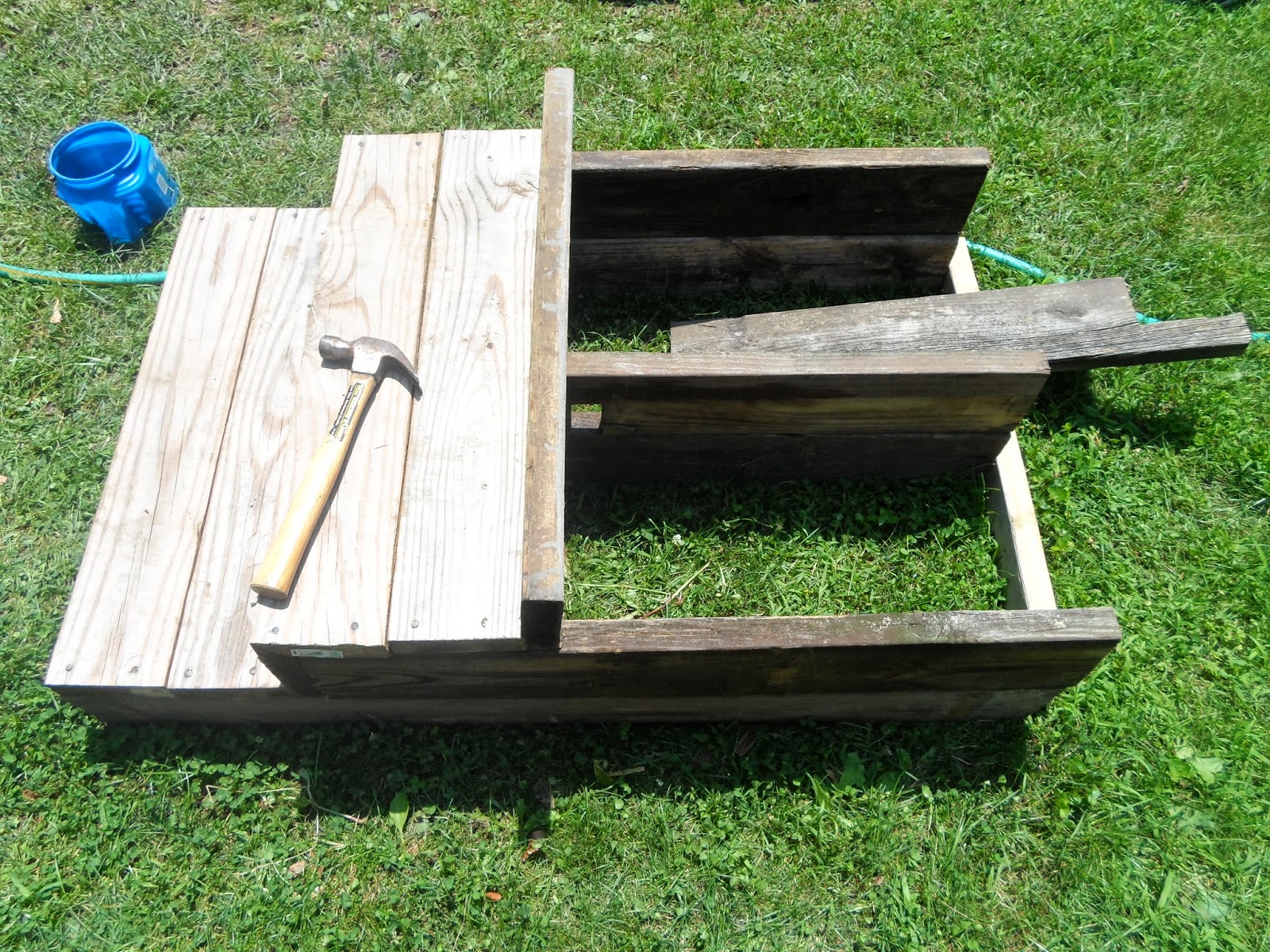 |
| Everything seemed to be going as planned as I nailed the stairs together. |
I thought I was finished. I had figured out a way
not to go to The Home Depot, as I had thought I was destined in my previous
Projects Gone Wrong post.
To briefly recap, I had built deck stairs, but discovered upon completion that they were too steep and too shallow and because I did not have the needed wood in my woodpile, I thought I had to head to the hardware store.
But then a couple of days ago, my wife and I were making an emergency bathroom break for our three-year-old Patrick on our way to see my in-laws in Pittsfield when I noticed steps leading up to a door alongside a building.
"Box steps!" I called out to Lisa.
I often do this, calling out words connected to a conversation from hours if not days earlier.
"What?" Lisa said, looking at and around me as she walked Patrick up the stairs into the cafe with the bathroom.
"Box steps," I said, pointing at the example I had just seen. "I can build the deck stairs with box steps and I think I have the wood in the back; so I won't have to buy any."
"Oh," she said, shuffling our son Patrick inside.
I stayed there a second longer staring at the steps, imagining my upcoming project.
Box Steps, Almost Perfect
I'm not sure if "box steps" is the actual name for such steps, but basically this is what they are: They are made of several boxes, one built on the next, forming a series of steps. Although you cannot do this for high steps, if you have just a few, they make a clean, sturdy structure.
Basically, you build a box and then on the end, you lay two planks across the width on top; this becomes your lower step.
Then, you build a second box on the section without the planks, and then lay two planks on the end of that box; these become your second steps.
You keep this up until you have your desired number of steps.
I, however, failed to measure how long I should make the first box. To do this, I needed to measure the depth of each step and multiply that by three (because I had three steps); this would have given me the length of entire structure.
I often (nearly always) do this (screw up) when I build something for the first time and because I rarely build such things twice, my lessons collect dust until they are forgotten, which is about when I need to apply what I learned.
So, I had several two-by-sixes jutting out of the back of the stairs, which I needed to cut.
Sawzall!
Sawzall is the brand name for a reciprocating saw and if you do not have one, buy one. They come in really handy for awkward cuts.
So, with three cuts ...
... the stairs were cut down to size.
I nailed three two-by-fours to the side and middle planks (see above photo) securing them in place.
Then, I nailed a two-by-four to the back and screwed the stairs to the deck.
Finishing (I believed at the time) I nailed down the top planks for the last step.
"You know what?" I said to Lisa as she sat on the deck feeding our infant Gabriel. "It's not centered."
In my haste I forgot to center the stairs in the opening on the deck. Lisa looked at me a moment.
"Eh," she said, with a shrug of the shoulders and a look of pity in her eyes. "It's not
too noticeable."
"You're right," I said, ready to move on. "It's centered enough."
I stepped up the steps, testing out my creation, and then I looked down.
An empty sliver was looking back at me.
The stairs was missing a two-by-two strip of wood at the top, which I did not have in the woodpile.
"I have to go to Home Depot," I told Lisa. "I'll take the stairs out tomorrow and fill the gap in then."
"And before you put it back," said Lisa, "you can center it."
We'll see. ...

















































